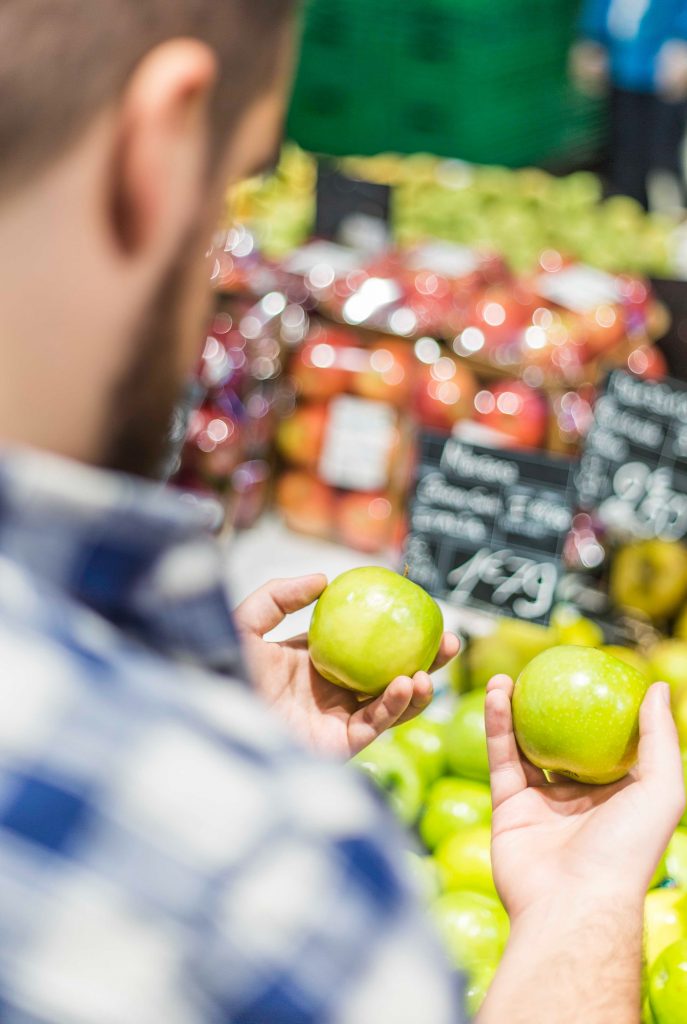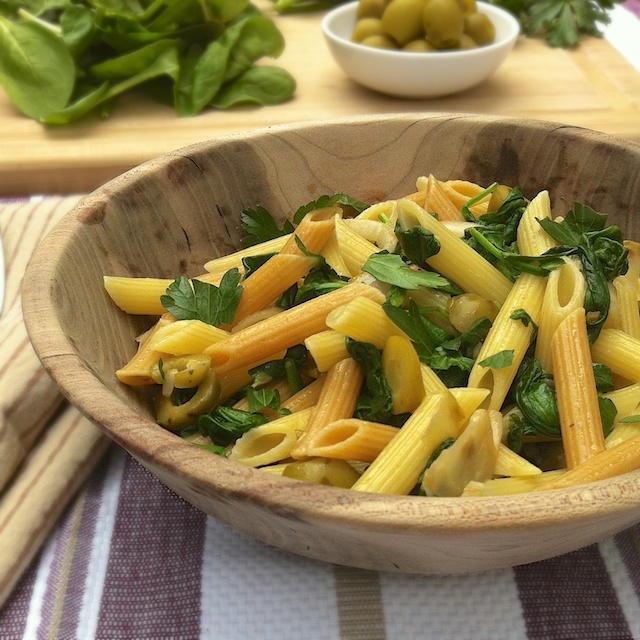The 8 Biggest Fitness & Diet Myths You Must STOP Believing if You’re Over 40 and Want to Burn Fat, Reduce Back Pain and Get off the Diet Roller Coaster 0
Perpetuating diet and fitness myths only leads to more confusion.
Many diet and fitness myths just won’t die even though they’ve been scientifically disproven long ago. One reason they get perpetuated is that they seem logical. For example, eating small meals more frequently keeps your metabolism revved up because of the energy required to continually break down food. Unfortunately this is not the case. (I’ll bust this myth shortly). Another reason is marketing. Companies need to convince you their product will help you get fitter, leaner or more buff. Don’t get me wrong, plenty of products can help with this…. but not as quickly, effortlessly or in the way marketers would like you to believe. And let’s not forget about sensational headlines. Clickbait exists to entice you to open an article written solely for the purpose of getting your eyeballs to see more ads for products. Sometimes the articles contain nuggets of truth. Other times, they don’t or, they only give your part of the story.
photo by Raquel Martinez
Nutrition and Fitness are very new fields of science in the grand scheme of things (compared to physics or or math, for example). Since new studies are being published all the time, it’s hard to stay on top of the most current info and to know what is relevant. This article will debunk some of the biggest myths that need to be put to rest. Clinging to them could thwart your progress or hold you back from achieving the results you may be after.
Be open to change if you want progress.
If you’re in your 40’s, 50’s or even beyond your 60’s, improving your health and physical fitness will require making some lifestyle changes. As we get older, changing habits is not the easiest thing to do. Because health and fitness science keeps evolving, I think it’s good to try some some new tactics, within reason, related to diet and exercise. Some of these concepts may challenge conventional thinking. (Disclaimer: you should always clear any major lifestyle changes with your doctor first). Being open minded to trying new things and making adjustments to key pillars of our health like sleep, the foods we eat and the kinds of exercise we do, not only keeps our minds younger, but may make a difference in our aging process.
So keep reading because I’m going to debunk 7 of the biggest tired, old myths I still hear being perpetuated. If you still believe them, you may be hitting roadblocks if you’re trying to lose weight, build muscle or generally improve your fitness.
Myth 1: The Best Diet Ever is __ (fill in the blank). Everyone is losing weight and you’re missing out.

photo by Bill Oxford
The Ketogenic / Atkins, Vegan, Low Carb, Paleo / Ancestral and Mediterranean Diet, to name just a few. Now there’s even the Carnivore (all animal product only) diet and Ketotarian diet (vegetarian keto). It’s a multi billion dollar industry so don’t expect the trendy diets to end any time soon. There are people who proselytize one type of diet like they had a religious epiphany and want everyone to see the light. It’s true for some people, that following strict rules of a certain diet gives them an awakening of sorts. A major dietary change may have helped them realize what has been making them store fat and feel lousy for years. Look on Instagram or Facebook and you’ll see tribes of Ancestral eaters, Keto lifers and those faithful to Plant Based or Vegan diets. Is one of these truly the best?
Truth: Any of them can be if you follow a healthy version of it. Fried Bologna and cheese is technically keto and French Fries are vegan, but those foods daily might not give you the weight loss or health results you want.
There’s also the matter of picking the wrong diet for your specific body which can backfire with gaining more weight, GI discomfort, even higher worse cholesterol and triglycerides. For example, a person who is pre-diabetic may want to eat a Plant Based diet. This can backfire if they’re snacking on high glycemic foods or have rice and bread with meals. So being vegan doesn’t automatically mean being healthy because there are plenty of high sugar, processed foods that still fall under the vegan umbrella.
The keto diet has also been overly hyped by the media. It certainly has its place for many people with certain medical issues that it has been shown to help. But there isn’t a lot of wiggle room for getting it wrong which can backfire.
It is possible to be on an effective diet whether you prefer to eat mostly meat, mostly veggies, mostly fat or mostly carbs. Some diets appear to work better than others – in lab tests. But real humans don’t live in a lab. If a social media star, trainer or a friend tells you their diet is the absolute best for you without knowing key details about you, take it with a very large grain of salt and seek better advice.
Reality check:
Some diet gurus are out to sell books where they can write whatever they want thanks to free speech – no scientific or clinical research needed. They want to gain attention, get on TV, make a name for themselves and sell their product. They often promote following a diet with downright weird nutrition rules — where some foods are vilified and others are worshipped. Nutrition is not a religion. It’s a science.
Beware of bad diet advice and biased perspectives. Some dieticians and doctors may have self-interest agendas or are being paid by by interest groups.
What to do?:
Don’t follow a one-size fits all. Those usually only work in the short term. Then what happens? You gain it back.
The best diet for you considers your:
- Body type (endomorph, ectomorph, mesomorph) & goals
- Lifestyle & food preferences. (Good luck getting a vegan to follow a Paleo diet)
- Job stresses & family demands
- Where you live & food availability
- Cooking knowledge, ethnic culture, and more
No 2 people are the same.
The best diet is the one that doesn’t feel overly restrictive, gives you results and is SUSTAINABLE.
Some day soon the perfect diet will be easier to find…
Nutrigenomics is on the horizon. It’s a new field of science where a diet is designed based on your genes. It’s too new to be relied on yet but shows great promise. But as for now, researchers have found the best option for losing weight and improving health is to get personalized nutrition advice based on your personal food preferences and lifestyle factors.
Myth 2: Juicing diets (aka Cleanses) are healthy & help you lose weight.

photo by Eiliv Sonas
Truth: The benefits touted by juicing companies can be way over exaggerated. And, some are completely bogus in that there’s no reliable research to back up their claims.
Because juicing diets are extremely low in calories, you will lose weight, but very little will be body fat. You mostly lose water weight and muscle. If you do it long enough, your metabolism will slow down and the weight will come right back, plus more, when you start eating like you did before the diet.
Juicing can also spike your blood sugar levels. The process removes the fiber and what little protein may be in the fruits & veggies in their whole state. Fiber and protein slows down the release of insulin, helps you feel full and helps you absorb nutrients.
More Truth:
Don’t believe the hype (or celebrities telling you their “juicing secrets”). Juicing diets don’t actually “cleanse” or “detox” the body. Those messages were created by marketers, not scientists. If your gastrointestinal tract, liver, kidneys, lungs and skin are all functioning, your body is cleaning and detoxifying itself just fine.
If you are trying to get healthy after over-indulging on bad food choices, or you are being exposed to toxins in your environment (which can be stored in body fat), there are much healthier, longer lasting ways to do it.
Solutions:
Skip the juice and eat the whole food, veggies and fruits, in their natural state. This is where the much needed fiber and any protein is. They also make you feel more satisfied.
A good alternative, if you want something that’s drinkable is to use a blender to make whole food, micronutrient smoothies that retain the fiber and any protein. Another alternative is to practice Intermittent Fasting (what I do) and is backed by science. Bouts of fasting is a true detox, the way nature intended. Exercising and sauna bathing also helpful.
If you want to buy a detox kit, steer clear of those juicing cleanses and try something that has been clinically shown to work for fat loss, cellular clean up and rejuvenation. The product is called ProLon. It’s 5-day Fasting Mimicking Diet that is plant based, nutritious and specially formulated to mimic the effects of water fasting. I’ve written all about it here and compared it to water only fasting.
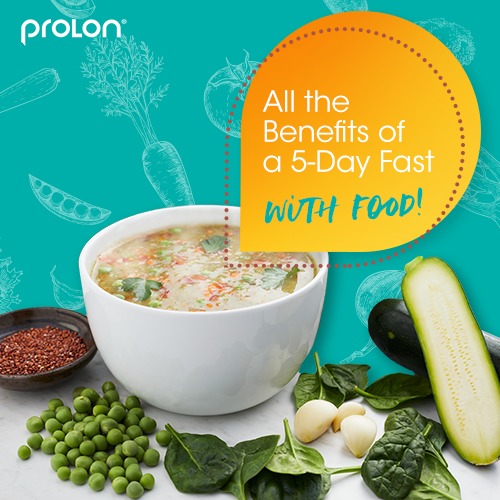
It’s easy to get sucked in by the amazing health claims you hear about juicing diets and how they help you lose weight fast. If it sounds too good to be true, it probably is.
Myth 3: The Greatest Exercise Program in the World is ___(fill in the blank). You’ll never get totally fit unless you do this.
TV ads, YouTube videos, social media influencers and magazine articles would have you believe if you’re not doing their particular program, you will never get the results you’re looking for. You’ve probably seen a few “exercise cults” around. Programs like CrossFit, Barre classes, yoga, Peloton, running programs, and so on, all have their acolytes swearing by the life-changing physical effects of any of these workouts. Each has impressive before and after pictures to prove it (and I’ll tell you the secret to how they get these great pictures in a minute…). While all these programs are solid and can help get you get fitter, there isn’t one that trumps all. In fact, I always recommend doing a variety of workouts, not just for seeing physical changes, but also for preventing over use injuries and burnout.
Any type of workout that pushes you a bit out of your comfort zone can help you see results. The key of course is consistency and doing the workouts regularly enough to see (and feel) your body change.

photo by Inspired Horizons
As you can imagine, doing a workout you dread every minute of because a friend, trainer, commercial, or an article told you it’s the best, is not going to be sustainable. You can’t fit a square peg in a round hole.
If you were to ask my advice, I’d tell you do a mix of various kinds of workouts. I know that’s not realistic for everyone. But if you go to a full service gym, you could take a range of classes or work with a trainer that can keep mixing things up for you. If you workout at home, pick a cross training program that offers a variety of types of workouts. If you’re a runner, cyclist or swimmer, you can mix it up by doing intervals some days of the week and steady state endurance workouts on other days.
Genetics can play a huge part as well. Some people are naturally built for certain types of activities. Some bodies are built for running and can do it their whole lives while others get injured more easily. Some people are built for power lifting – they’re stocky, sometimes even heavy set, are naturally strong and build muscle easily. Other people will never get as big or as lean as they want. So don’t get frustrated if you start a program with a friend and you both don’t see the same results.
Have you ever been tempted to start a program because of the amazing before & after pics?
You see those incredible transformations and think, “this is the workout I have to do!.” If you don’t quite get the same results, don’t get down on yourself,
Here’s how they get those sensational before’s and after’s:
If the people in the ads were used in an infomercial or “cast” to be part of the marketing campaign, they will often get free, very intensive training. They will have access to an in-person trainer to push them. They are also asked to follow a low-calorie or special diet while they’re on the program. Sometimes, they’re even asked to put on a few more pounds before they begin the program to make the results look more pronounced.
Some ads feature people who did it on their own. If they make you feel like a failure because you can’t achieve the results they did, take heart. You see, if you’ve been in really good shape for most of your life, but then just happened to put on 30, 40 or 50 lbs recently, maybe from a traumatic injury, illness, life change like getting a desk job after being a high school and college athlete or having a baby… it’s not going to be as hard to take off the weight as someone who’s been carrying it around for a few decades. Meaning, if you were in great shape for a while before suddenly gaining a lot of weight, it is easier for you to get back to the weight you used to be, assuming you were at that weight for years, not just a few months. And, assuming there’s no major change to your health status. This is known as the “set point theory.”
Myth 4: Crunches are the best way to flatten your abs and get a six-pack
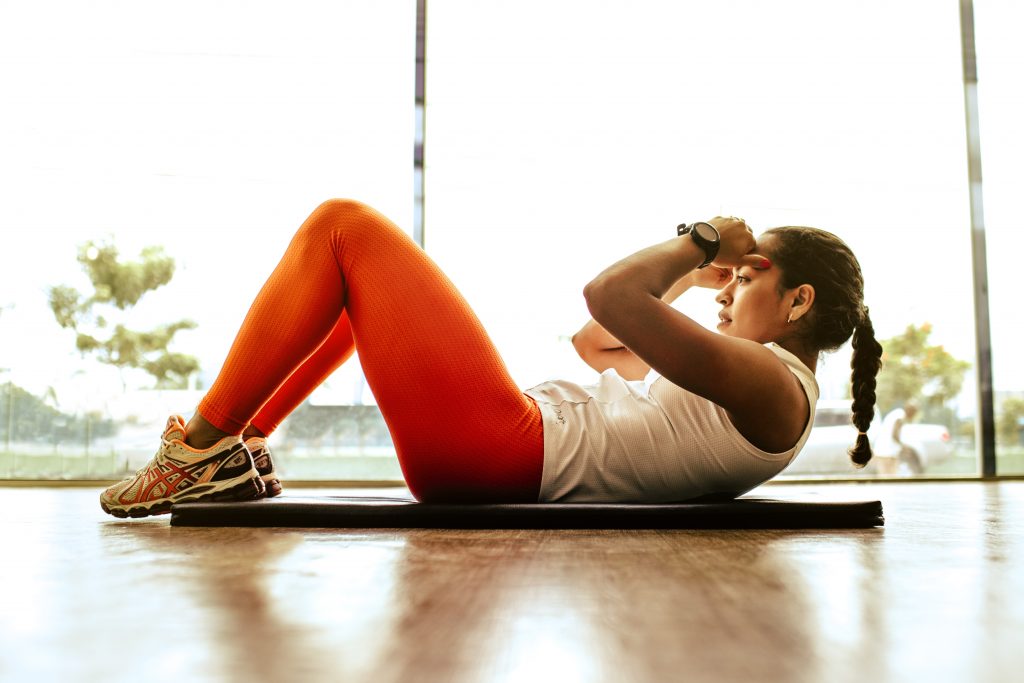
photo by Jonathan Borba
Truth: All those ab workouts and devices being used by those ripped models on TV, Instagram and YouTube make a pretty compelling case for doing tons of crunches, but for some, they can do more harm than good.
Take it from me, someone who has severe, congenital spinal stenosis and works with a lot of clients suffering from back pain, that crunches should be the exercise you do the LEAST of for your abs… not the most.
If you suffer from recurring incidents of back pain, join the club. ~80% of adults suffer from low back pain at some point. A large survey, found more than ¼ of all adults experienced back pain during the past 3 months. Back pain happens to be the #1 cause of job-related disability and a major reason people miss work. This is not a problem to be taken lying down!
Men and women are equally affected by low back pain and you don’t need to be very old to suffer from recurring flare ups. I see more millennials with back pain these days than ever before.
Aside from disc degeneration and osteoarthritis that happens as we age, other factors can also cause recurring back pain such as: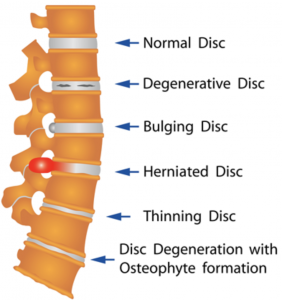
- An accident (lifting something heavy, sports injury, whiplash, etc)
- Tight hamstrings
- Being overweight
- Poor posture
- Smoking
- Poor eating habits
- Not regularly exercising / sedentary lifestyle / too much sitting
- Spine diseases, cancer, other health conditions
If you have any problems with your lumbar discs like:
Bulges, osteophytes, degeneration, thinning discs from age or other conditions of the spine, crunches could be making them worse.
Here’s why:
When you’re standing up tall, and have a natural curve in your lower back, you spine in is “neutral posture.”
In neutral, your discs have the most available space. But when you crunch, you flatten the curve, and squish the discs a little.
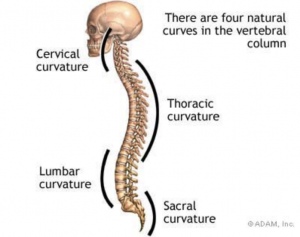
Think of your discs like car tires. The more miles you drive on them, the sooner you wear out the tread. Every time you crunch, the discs between the lumbar vertebrae get squeezed causing some wear and tear. Do thousands of crunches over time, and you’re wearing the tread out on those discs faster. Now you may add a twist to your crunch and that’s adding torque & rotational force to the disc. Repeat this over and over again and, even more damage can happen.
Crunches mainly target the superficial layer of the abs. This is the rectus abdominus and is the muscle that looks like a 6 or 8 pack. But…that doesn’t mean they flatten your tummy. You can actually do your crunches with poor technique and push those muscles out, making your belly bulge instead.
Solution: The best way to flatten the abs and tighten the core while minimizing forces on the spine is to do a variety of planks, body ball and TRX roll-outs, non-rotational wood chops and other core stability exercises. These exercises firm and tighten the core muscles, help alleviate and also prevent back pain and pull the belly in. Did you know pull ups and chin ups are major core activation exercises?
If your goal is to see your 6-pack, you need to lose fat around the midsection. You cannot spot reduce, meaning doing a lot of ab exercises doesn’t burn fat off the abdominals. That’s why we say, “muscles are made in the gym, flat abs are made in the kitchen.”
Myth 5: Lifting heavy weights will make me bulky. I should spend most of my workout doing cardio to burn fat.

Truth: After a certain age, and definitely by 40, you need to be lifting more weights, not doing more cardio. People with more muscle mass live longer, healthier lives. Plus, muscles give our body a more attractive physique and burn up fat and carbohydrates.
We lose between 5 and 7 pounds of muscle every decade after age 20. The only way to get muscle back is to strength train. That’s one of the reasons our metabolisms slow down we tend to gain fat weight with age. Strength training can literally help keep us younger and live longer as well.
Research shows strength training not only slows down, but also reverses the aging process at the gene level!
But many women in particular complain of feeling “bulky” from weight training. This is usually the result of building muscles before you start losing the body fat sitting above them. But if you lift weights in a meaningful way, you can build muscle and burn body fat simultaneously!
Low intensity cardio does primarily burn fat. But fat burns slowly and efficiently meaning it does not require a lot of energy, therefore does NOT burn a lot of calories. If you still believe that low-intensity cardio is “the fat burning zone,” I have bad news. The “fat burning zone” is a nice way of saying, you’re not working very hard so you need to do it a lot longer. If you have the time for long workouts, that’s great. But as we get older, we need to do workouts designed to build strength and burn fat. This takes less time than you think. Forget about the old school approach of lifting weights then doing cardio…
Solution:
Perform resistance training exercises using either an interval protocol, like Tabata (20 seconds as hard as possible and 10 seconds rest for 8 rounds) or other HIIT format. Or, you can do a weight training circuit with cardio bouts mixed in. This might look something like 4 strength training exercises done for 1 minute each, then 3 – 5 minutes of moderate to moderately-high intensity cardio. Keep repeating the circuit for the duration of your workout. The key is not to rest too long if you want to keep the calories burning.
Tip: You don’t need a gym for this. Body weight exercises work fine. See my YouTube channel for free workouts and tutorials
If most of your workouts are cardio based, like walking, swimming, jogging or cycling, you MUST add intervals. There are many simple ways to incorporate them into your current routine. You will burn more fat, plus make some much needed muscle, if you mix in high intensity intervals to your cardio workout.
There’s no debate. Studies show that bouts of High Intensity Intervals burn more fat than low to moderate intensity cardio alone in the same amount of time. Doing a combination of strength and cardio exercises in the same workout can save you lots of time at the gym. You’ve heard of the “afterburn?” That’s the revved up metabolism you have for hours, possibly even a whole day, after a high intensity workout. You don’t get that from long, slow cardio workouts. Also, remember, muscle takes up less space than fat. So it’s not the muscle making you feel feel bulky. It’s the fat you haven’t burned.
While these workouts sound exhausting, you only have to do them 2 or 3 times a week. It’s not recommended to do high intensity workouts every day.
Myth 6: All Calories Are Created Equal

Truth: It is true, that outside of the body, 100 of calories of broccoli or 100 calories of cookies are the same, when they’re sitting on your plate. But once those calories go into your body, it’s a very different story. To say that a calorie is a calorie no matter what type of calorie it is (carbohydrate, protein, fat, alcohol or table sugar) is a huge oversimplification and false.
Case in point: All food requires a certain amount of energy (calorie expenditure) to digest, absorb and metabolize the nutrients. This is knows as the Thermic Effect of Food (TEF). In other words, when you eat food, some of the calories are burned just to digest and process what you ate.
Here’s the approximate TEF for 3 of the main macronutrients.
Fat: 0-3%.
Carbs: 5-10%.
Protein: 20-30%.
This means if you eat 100 calories from protein, your body uses 20-30 of those calories to digest and absorb it. You’re left with a net of 70-80 calories. If you eat 100 calories of pure carbohydrate you would be left with a net of 90-95 calories. One hundred calories of fat would leave you with a net of 97-100 calories.
Notice: Protein requires much more energy to metabolize than fat and carbs. Numerous studies have been done on this.
A study on college age girls found that their metabolisms were boosted two-fold after a high-protein meal compared to a high-carb meal. Another study done on both lean and obese women compared a high-fat meal to a high-protein meal. The high-protein meal required nearly 3x more energy to process than the high-fat meal in both groups of women.
Count on a high protein diet to boost metabolism by 80 – 100 cal/day compared to lower protein diets because of the TEF.
Approximately 10% of your total caloric intake is used up for digestion. Higher protein diets can increase this number. If you’ve ever had the “meat sweats,” you’ve experienced TEF happening.
Beware: highly processed food has already been broken down. That’s what “processing” does, so it requires virtually no energy to be absorbed.
Whole foods also use up more energy to digest vs. processed foods.
The sandwich study compared the difference between eating a sandwich made of whole grain bread and cheddar cheese vs. a processed food sandwich made of refined white bread and processed cheese (think Wonder Bread and American cheese). Both had the same number of calories and macronutrients (protein, fat, carbs).

photo by pixzolo photography
Result: Those who ate the whole grain sandwich burned twice as many calories digesting the meal.
Good to Know: High-carb diets that are low in fat and protein can leave people feeling hungry. People on low-carb diets tend to start eating less calories, because their appetite goes down. It’s possible to lose weight either way, but people on high-carb diets need to focus more on cutting down calories to lose weight vs. people on low-carb (high fat and protein) diets who can often eat until they feel satisfied and still lose weight. This is not a guarantee however. People who have been on a high sugar, high processed food diet ( the “Standard American Diet”) for a long time, may have developed a metabolic disorder. In this case, staying on a high carb diet may not be the best option.
Solution: You don’t need to drive yourself crazy counting calories in order to eat less of them. Changing the types of foods you eat can help you eat less automatically.
If you’re trying to lose weight or improve health but nothing you’ve tried is working, it may be best to consult with a doctor or nutritionist to help you navigate the best options for your lifestyle.
Myth 7: Water Only Fasting puts you into starvation mode which slows down metabolism and prevents you from burning fat.

It sounds so logical, its no wonder this myth has been around for-ev-er. But finally the tides are turning and people are starting to believe the emerging body of science showing intermittent fasts speed up your metabolism. Fasting long term, like more than 72 hours or a week will likely slow down metabolism, shorter term, intermittent fasts, 72 hour or under, can actually increase your metabolism.
Truth:
Whenever you lose a noticeable amount of weight, whether its from longer fasts or low calorie diets, your metabolism will slow down. The less you weigh, the less need there is for energy to move your body around and function. This means when you’re heavier, you burn more calories per day. In other words, if you recently lost 20, 30 or more lbs, your metabolism is now a bit slower.
But that’s besides the point. Short term, intermittent fasts done regularly can have a positive effect on your metabolism. Research shows this is from your body pumping out large doses of norepinephrine, which stimulates fat cells to break down burn.
According to research, fasting for up to 48 hours can boost metabolism by 3.6–14%. But after 3 days the opposite happens and your metabolism slows down.
Solution:
Try adding some short term fasts into your life. There are many ways to integrate fasting strategies into your life. Start with 12 hours and work up from there. More and more studies are showing the benefits to various types of fasts, including longevity and preventing diseases related to aging.
Myth 8: If I work my (pick one:) __Butt __Abs __ Thighs, every day, I will burn fat off that area.

photo by Jack Demore
Truth:
No matter how many ads you see for workouts or products claiming to burn the fat off your belly or the cellulite off your butt, spot reducing is not a thing. That means doing a lot of arm exercises won’t burn fat off of your arms, doing butt workouts until you can sit won’t burn fat off your bum. When fat cells are needed to release energy, it can come from any fat cell in the body.
We don’t really have control over whether a fat cell is going to burn off your belly, your butt or your face. But don’t get discouraged. Toning and strengthening the muscles in those trouble zones like your butt, arms, legs and core is still important to your fitness. Building those muscles will change their shape, improve their tone and ultimately make those areas more firm. However, to burn more calories from fat, you will want to do more exercises that use multiple muscle groups at once. These are called, compound movements. Think of holding 2 dumbbells and doing a squat to a biceps curl to an overhead press. The more muscles used at once in an exercise, the more calories that exercise burns per minute. This is because muscles require energy to work and the energy comes from calories. Now think of a single muscle exercise like a biceps curl. Does that require as much energy as adding a squat and a press? Of course not.
Solution:
If you tend to do one exercise at a time per body part, start replacing those exercises with ones the involve more full body movements. You can add squats and lunges which use the major muscles of the lower body to upper body exercises. I have workout suggestions and tutorials here. Also, refer back to Myth #5.
After more than 25 years of following the research in the areas of fitness and diet, I am still surprised at how slowly the tides change. But eventually they do. I never recommend jumping on new trends that are have no scientific evidence. But once a body of research starts to emerge, it’s probably worth trying. I know changing long held beliefs and ingrained habits are hard. But if you still abide by any of these 8 myths, they’re definitely worth kicking to the curb.
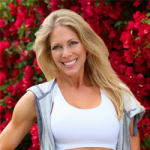 Jill BrownHi, I'm JillI am a Los Angeles based Fitness + Nutrition Coach. With 20+ years of experience in teaching, training and continuing my education, I have transformed thousands of lives through fitness and healthy lifestyle changes. Original Article
Jill BrownHi, I'm JillI am a Los Angeles based Fitness + Nutrition Coach. With 20+ years of experience in teaching, training and continuing my education, I have transformed thousands of lives through fitness and healthy lifestyle changes. Original Article


